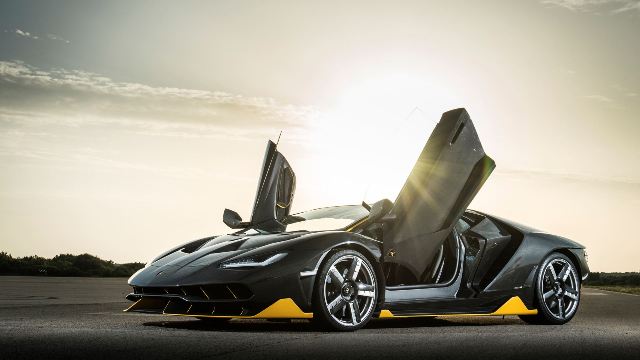
Lamborghini celebrates 60 years of unique cars
London, 08 August, 2023, (Oilandgaspress) – Automobili Lamborghini has made one-off models that signal the technical and stylistic direction the company will take in the immediate future. These are design or technical prototypes or experimentation with new concepts to help develop the Lamborghinis to come. In the 1960s, these one-offs were very often show cars bound for motor show parades. In more recent years, the designation changed from “one-off” to a category created specially by Lamborghini: “few-offs”, essentially a limited run of cars for the most loyal customers that pre-empt or enhance the most advanced technical solutions that will be used on production cars in later years. The same formula will be repeated in just a few days at Monterey Car Week in California, where Automobili Lamborghini will present the prototype of its first 100% electric car.

The first Automobili Lamborghini one-off was the 1963 350 GTV, which gave rise to the 350 GT, its first production car. Then, within the 350-400 GT range, came the 350 GTZ, with two units made by Carrozzeria Zagato in Milan in 1965, based on the 350. Carrozzeria Touring, also based in Milan, built two 350 GTS open top units in 1965. In the same year, the 400 Monza was created, made by Carrozzeria Neri & Bonacini, which produced the tube frames of the 350-400 GT production cars. In 1966, the last model produced by Carrozzeria Touring was the 400 GT Flying Star, an innovative shooting brake which, in terms of practicality, would go on to inspire the Espada.
In 1965, designed to be fitted with a rear engine, as envisioned for what would become the Miura, two design models were developed: one, called the P400 Tigre and made by Touring, and another, simply known as the P400, made by the newly created Italdesign of Giorgetto Giugiaro. However, this turned out not to be the right path given that they didn’t sufficiently maximize the revolutionary technical solution of the 12-cylinder engine in the rear transverse position and were never built at a 1:1 scale. However, on the Giugiaro version, the first appearance was seen of an unconventional door opening, forward and upward, but attached to the roof. It was the first seed of an idea that would germinate with the Countach.

The Marzal, the four-seater “glass” car, was presented in 1967 and was destined to become one of the best known show cars in the world, bringing many new ideas that would later be used in Lamborghini’s production. Firstly, four comfortable seats, one of the most common items on Ferruccio’s wish list, and the flat, sharp front end, and the hexagons that would later be found on the Espada. Furthermore, the hexagons would become one of the stylistic symbols of Lamborghini which, even today, feature frequently. The Marzal also sported very large gull-wing doors. “We did everything to keep them on the Espada,” engineer Stanzani would recall, “but the different volumes required by the front position of the V12 engine challenged this, and on the Marzal it was a rear transversely mounted 6-cylinder in-line engine that prevented us from doing so.”
In 2023, two one-offs have been created by Automobili Lamborghini to celebrate the V12 engine, which has now reached the end of its life in its non-hybrid version. Both models are based on the Aventador SVJ, with a 780 CV V12 engine: the Invencible berlinetta and Auténtica roadster are the ultimate expression of super sports cars in their purest style. Inspired in some aspects by other past limited series such as the Sesto Elemento, Reventón and Veneno, they have streamlined and simpler interiors with less distractions for the driver, who is left to experience the purest sensations that the V12 can deliver. These two one-off cars both have a carbon fiber monocoque frame and full-carbon bodywork, replicating designs and technical solutions that have been successfully tested in competitions.
This extraordinary tradition will continue in the coming weeks when the first prototype of the “fourth model” will be presented in the United States: the full-electric Lamborghini which, following the guidelines mapped out in the 2021 “Direzione Cor Tauri” program, is due to enter production by the end of the decade.
Information Source: Read More
Energy Monitors , Electric Power , Natural Gas , Oil , Climate , Renewable , Wind , Transition , LPG , Solar , Electric , Biomass , Sustainability , Oil Price , Electric Vehicles,

